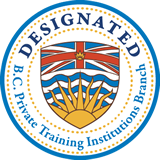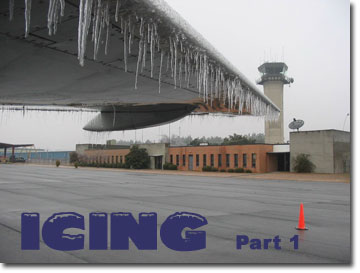 |
|
Carburetor Icing: Part I, Causes
Carburetor icing is something most of us who fly have experienced at one point or another. On most occasions, it is no more than a mild irritant and can be dealt with easily and quickly. Ideally, we will understand the processes that lead to the formation of ice, be familiar with the symptoms of developing ice, and know the techniques of prevention and the required actions to take in the event ice does begin to build. This month, we’ll take a look at the conditions and causes linked with the formation of ice in an aircraft’s air intake system. Next month, we’ll explore the symptoms of ice formation and the remedies available to us. Although carburetor icing is frequently associated with winter, it can be a problem any time of year. Conditions favourable to icing are a combination of moist air and temperatures in the range between -13º C and +38º C. The temperature range most conducive for the formation of intake ice falls between approximately -5º C and +15º C. Given moisture in the air—a relative humidity of at least 50%—and the correct temperature range, the formation of ice is likely. Carburetor ice forms as a direct result of activities taking place within the carburetor itself, given the right conditions. The function of a carburetor is to vaporize liquid fuel, mix the vaporized fuel with air in correct proportion for combustion and deliver that mixture to the intake manifold for induction into the cylinders. The process of vaporizing fuel—converting it from a liquid into a vapour—requires energy. That energy is available as heat stored in the fuel itself and in the air being used to transport it. As heat is used to assist the vaporization process, the temperature of the fuel and air decreases. It takes energy to produce change. Incoming air can decrease as much as 30º C in temperature as it passes through the carburetor. The drop in temperature resulting from vaporization of fuel may cause water vapour carried by incoming air to freeze onto the carburetor barrel or the butterfly valve, also known as the throttle valve, which regulates the amount of fuel/air mixture being drawn into the intake manifold. This type of icing is called fuel vaporization ice because the icing results from the heat decrease of fuel vaporization. Operating your engine properly leaned can be of some help in reducing the potential for fuel vaporization ice. To assist vaporization, the carburetor is shaped such that the air/fuel mixture is forced to pass through a venturi tube: a tube that narrows and then widens out. Remember old Mr. Bernoulli? Daniel Bernoulli discovered that the pressure of a fluid multiplied by its velocity is a constant: c = pv. This is one of the basic principles used to explain why a cambered wing produces lift. Because their product is a constant, we say pressure and velocity vary inversely: as one increases the other decreases. When we accelerate a fluid, increase its velocity, for example the air/fuel mixture headed into the intake manifold, its pressure decreases. Reducing the pressure of a fluid also reduces its temperature. Temperature, a measure of heat energy, results from molecular collisions/unit of time: lowering the pressure reduces the number of molecular collisions taking place in a given time. The same phenomenon causes rising air in the atmosphere to cool. Expansion due to a lowering of pressure results in decreased temperature. We generally refer to the measure of this temperature decrease as the lapse rate. Ice formation resulting from the decrease in air pressure and thus temperature is called throttle ice and is likely to form on the surface of the butterfly valve. Even a small amount ice forming on the butterfly valve can produce serious problems; a sufficient build-up of ice can result in jamming the throttle and, potentially, shutting down the engine entirely. Fuel vaporization ice and throttle ice are additive: each process increases the likelihood of the other taking place. They help one another along. Pilots flying aircraft with fuel-injected engines may think of themselves as immune to the inconveniences of ice associated with engine air supply. This is only partially true. Fuel injection eliminates the carburetor; air and fuel are combined immediately prior to induction. The potential for vaporization icing is eliminated. However, air must still pass through ducting and past a throttle valve where flow is restricted. When temperatures drop below 5º C, given all the necessary conditions, throttle icing may still occur in a fuel-injected engine, reducing or cutting off airflow to the cylinders. Both carbureted and fuel-injected engines are subject to impact icing: the formation of ice on intake filters or at bends in the intake ducting. Minute ice crystals, snow, sleet or supercooled liquid may impact vulnerable parts of the aircraft’s air intake system. The energy released by impact can cause frozen material to momentarily melt and refreeze resulting in constriction of airflow to the engine. In the case of supercooled liquid, contact with cold metal will be sufficient to allow freezing to occur. Understanding why and how carburetor and other forms of air intake icing form is an important first step in learning to protect ourselves from the results. We would all like to avoid the great silence of an engine quitting, if at all possible. Next month, we’ll take a look at recognizing the symptoms of ice formation in the aircraft air intake system and some of the remedies available to us.
|



